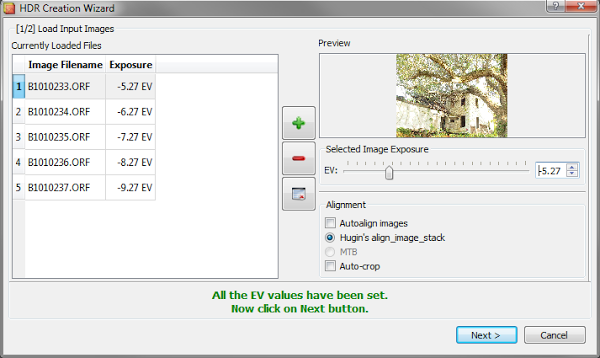

Approximately aligned stacks are common when you shoot bracketed sets handheld, or in windy conditions with a light tripod. If your images form approximately aligned stacks, you can create stacks as usual, select all the images and then uncheck Link by the image position. The stack number of each image is given in the table. and enter the stack number you want the selected images to join. You can also move images into an existing stack without selecting all the other images in the stack: press Change stack. To do this, select all the images in the stack, and press the New stack button.
:max_bytes(150000):strip_icc()/ScreenShot2019-09-13at3.18.26PM-62a38aa518f3499c98f050c2507596a0.png)

For example, if they form a bracketed (exposure) set shot on a sturdy tripod. Image orientation can be linked between a group of images if they are already aligned.

Only one image can be the anchor, and by default this Select Anchor this image for position to indicate that a particular image shouldn't move when Note that it is also possible to reset Image Orientation along with other parameters using the Reset. Changes in orientation will be applied to all selected images. It is possible to select multiple images at the same time. This is useful if the optimizer could not determine the image orientation entirely correct and got stuck with a suboptimal result. The Reset button will reset all angles and translations to zero. In the Image Position section, the orientation of the selected images in the final panorama can be specified by yaw, pitch and roll angle (in degrees) and the X, Y, and Z translation parameters. Using Clean control points button, hugin will try to find and remove outlying control points using statistical methods. Clicking Run Celeste will attempt to identify 'sky' control points using the celeste tool and delete them. Often a project has many control points attached to clouds in the sky, this is usually unwanted as clouds move between photos. Remove Points does exactly what its name suggests, it removes control points between the selected images, or all control points if no image is selected. The Hugin Preferences determine the list of these Control Point Detector programs and can be used to set further options and to add new tools to the list or another instance of the same Control Point Detector with other settings (like for rectilinear images or for (full) frame fisheye for example.
Hugin image stacking generator#
Hugin will then launch whichever control point generator (feature matcher) you have configured in Preferences->Control Point Detectors to add detected control points to the project. Individual control points can be created and edited in the Hugin Control Points tab, here in the images tab they can be manipulated together.Īutomatic creation of control points can be done by pressing the Create control Points button (if you select just some images, then control points will only be found for those selected). adds all images with a similar file modification time as the selected image if the the project is empty then a file dialogue opens to allow you to pick this initial file. Images can either be added with the Add individual images.


 0 kommentar(er)
0 kommentar(er)
